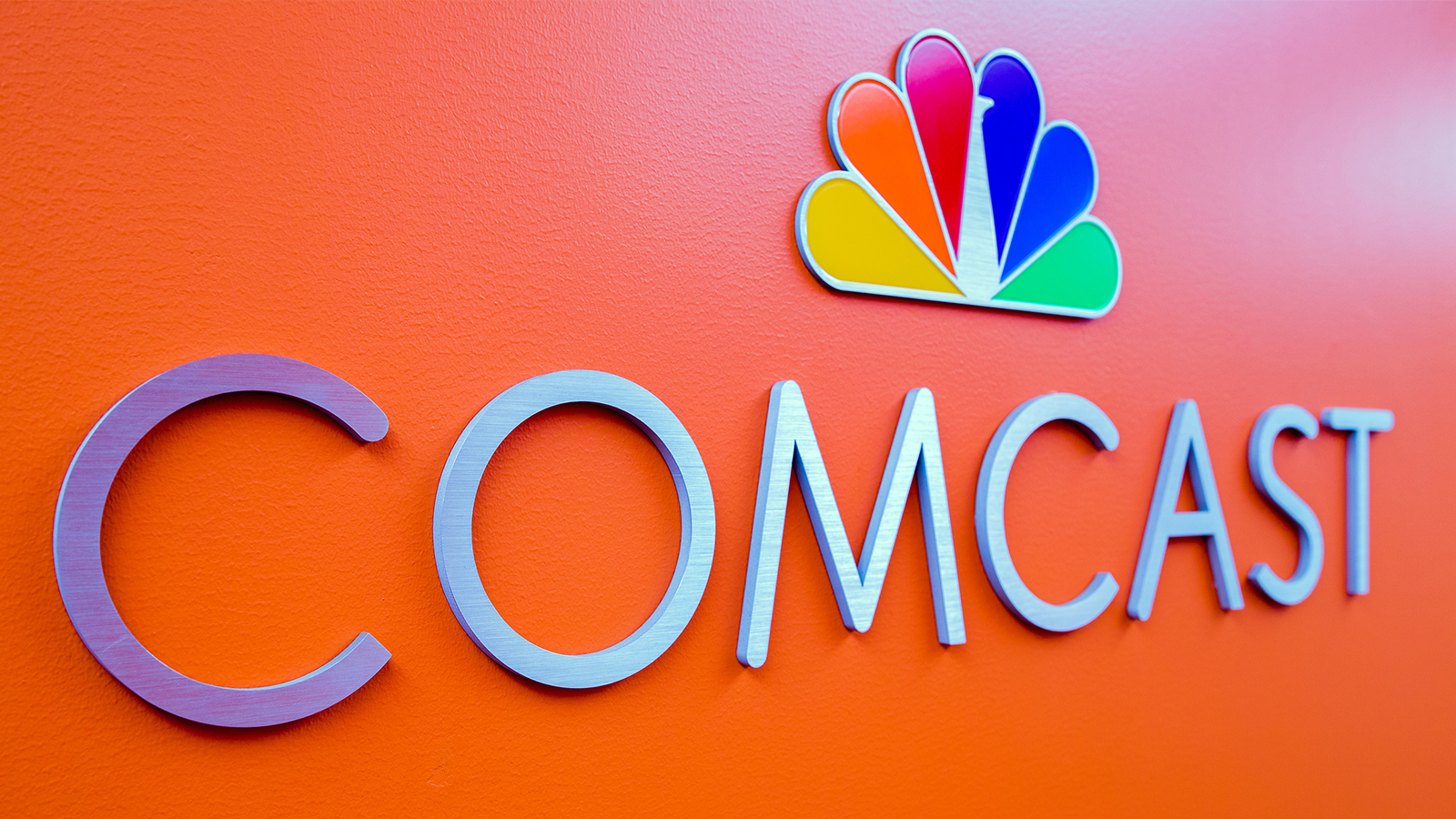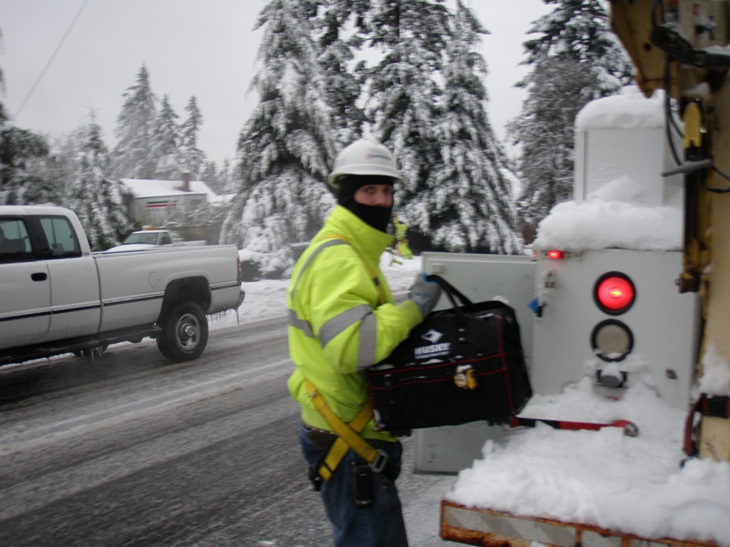Update on the Major Snowstorm of January 2012 and Your Comcast Services in Washington

[youtube=http://www.youtube.com/watch?v=miB_ngLaDaE]
As of 9 a.m. Friday, Jan. 20, we estimate here at Comcast that power outages are accounting for more than 95 percent of the 262,000 Comcast customers who currently do do not have service. Most of the rest of the damage comes from damage to our lines and equipment from fallen trees and branches. Similar to what the power companies are reporting, the hardest-hit areas are along the corridor from places like Issaquah in East King County to Auburn in South King County to Pierce and Thurston counties. Other places were hit hard too, such as Vashon Island and parts of Gig Harbor.
(The latest update to this article is available at the end of the post)
With roads becoming drivable, our crews are assessing damage and beginning repairs. The good news is that the storm did not damage the main fiber optic infrastructure of our network.
That means that after power outages, the No. 1 reason our customers are without service is due to damage to the cable lines stretching from the street to their homes. These lines typically serve only one home.
However, there are downed lines throughout our service area. In some cases, a downed line is still providing service. In other cases, the line has been severed or severely damaged to the point where it no longer can deliver services.
It is important to note that due to the extent of this storm, our crews have to prioritize the work they do. The first priority is repairing equipment that serves the largest number of customers. Although we are working as quickly as we can, the reality is it could take several days to fix downed lines that may still be providing services. And of course, with trees continuing to fall, we may have to wait to make repairs in your area until it is safe to do the work.
But please don’t hesitate to call us if your home has electricity but you do not have Comcast service. You can reach us at 1-800-COMCAST. When you call, it is very helpful if you can let us know if you see a downed line to your house and whether the roads to your neighborhood are drivable.
Surely now is a good time to talk about network reliability and service outages.
- A percentage of outages are inevitable. We operate a sophisticated, modern network with a fully redundant fiber optic backbone. But not network is perfect. The reality is if a tree falls on the line between the street and your house, chances are your cable will go out.
- In any major storm, power outages are the number one reason why you can’t watch television or surf the Internet. It sounds so obvious. If you don’t have any power, you can’t turn on your TV or desktop computer.
Here’s a couple of statements that might sound familiar to you:
- My power is not out. Why is my service out? There are a couple of possibilities. Sometimes, a power outage elsewhere in your area means service may not be getting to the area around your home. We know that’s frustrating. We have been deploying generators throughout the night and of course today, but they don’t catch all nearby power-related problems. Another possibility is that a tree branch did not affect your electricity, but did affect your cable. Whatever the situation, let us know. You can call us, or email us at we_can_help@cable.comcast.com, or reach out through Twitter via @ComcastCares
- My power was restored hours ago and I still don’t have cable. How come? There could be any number of reasons for this, but the most common are:
- A tree fell on the fiber optic cable serving your neighborhood or the coaxial cable connecting your house.
- The equipment serving your neighborhood has been damaged or is located in an area that is still without power. Although we have backup generators, the reality is that after several days, even those generators can stop working.
- Yes, but why can’t your services work the minute the power is restored? We know it is frustrating that after what could be days of waiting, your power goes up but in a small percentage of cases, your cable might not. Due to safety reasons, our repair crews must wait until the power company has completed its work and given the all clear before we can begin our repair work. Even with some of the most sophisticated network monitoring equipment at our disposal, the reality is we may not know the full extent of the damage to our network until our crews our onsite and have begun the time consuming and laborious task of splicing severed fiber optic lines. Also, you may not notice your cable line is down until power is restored, and you realize you don’t have one or more of your cable services.
As anyone who has lived in the Pacific Northwest knows, we get our share of nasty weather. Rain and snow will fall. Winds will blow. Trees will fall down. We work to keep our network up and running, spending hundreds of millions of dollars a year to add more fiber optics, upgrade equipment and improve reliability. We also are constantly refining our methods and procedures to ensure that we repair issues before they impact the services we provide our customers and to speed up our response when they do.
But sometimes there are weeks like this one, when Mother Nature shows us who is really in charge. All we can say is that we are doing our best and to ask for your patience.
3 p.m. Storm Update, Friday, Jan. 20
The number of customers without service continues to fall as power is restored. But there are still many customers, especially in the hard-hit areas of the South Sound, who are without service due to downed cable lines. The good news is our fiber optic backbone—the main highway of our network—continues to remain intact.
Additional crews, including technicians from as far away as California, will be on hand over the weekend to repair the damage.
One important reminder: we anticipate that a small percentage of our customers may not see their cable services restored immediately after their power comes back on. One reason for this is that the section of our network serving their homes may have been damaged.
But a less obvious reason is that the power may still be out in an area where the network equipment that serves their neighborhood is located. We have backup batteries and even backup generators in some cases to keep the power flowing to this equipment. The reality, however, is that we have 24,000 miles of cable lines and more than 9,000 different points within that network that need to be powered up at any given time, making it extraordinarily difficult to keep all these pieces of equipment powered up during a prolonged commercial power outage.
As always, we thank you for your patience.
Note: You are welcome to leave comments at this post, but we don’t monitor this site 24/7 for purposes of customer service. If you have a customer service question or report, feel free to email us at we_can_help (‘at’ symbol) cable.comcast.com, reach out via Twitter to @ComcastCares, or call us.
